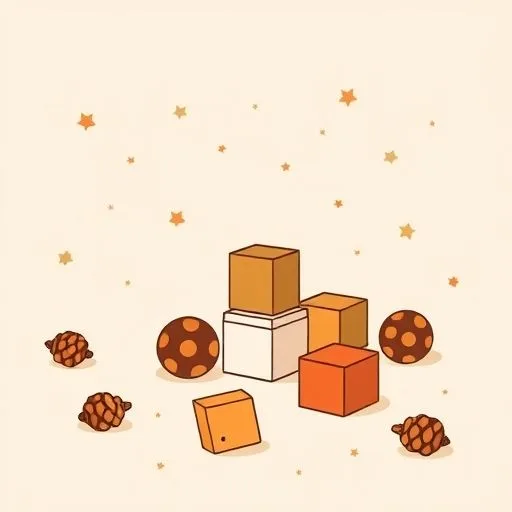
You know that moment? When your little explorer comes running with a half-painted pinecone shouting ‘Look what the squirrel designed!’? That’s my heart right now – because while the world buzzes about machines becoming colleagues in 2026 and nurturing curiosity through play, I’ve got news no algorithm can replicate: Our kids’ wildest, messiest play is secretly training them for the workplace of tomorrow. And folks, that thought hit me like a burst of kimchi pancake joy last Tuesday!
How Does AI Collaboration Affect Children’s Future?

Okay, imagine this: Next year’s office isn’t just keyboards and coffee runs. It’s humans brainstorming alongside algorithms drafting contracts, surgeons co-piloting with neural scanners, teachers customizing lessons with AI tutors. That recent trend? It’s not sci-fi anymore – local hospitals are already testing this!
But here’s what made me spill my matcha latte: when researchers asked consultants working with AI, productivity jumped 40%… only when humans steered the ship. Like that time I let my girl ‘plan’ our weekend picnic using her toy GPS – she chose the squirrel observation spot over the playground! Pure genius? Or proof that even toddlers know the magic happens when humans lead the ‘why’. Nurturing curiosity is our compass in this AI collaboration era.
Let’s be real though: That Vox article about ‘brain rot’ from outsourcing thinking? Gives me goosebumps. When my early elementary explorer started asking Siri to name cloud shapes instead of using her imagination, uh-oh. Turns out MIT’s spot-on – AI’s like that super-efficient travel planner who books perfect flights… but forgets to pack your kid’s lucky rock for courage.
That’s our parenting challenge: raising humans who treat AI like a trusty hiking buddy (great for trail maps!), not the tour guide who decides where to go.
Why Play Beats Programming in Nurturing Curiosity?
Picture our neighborhood this morning: Kids’ laughter bouncing off those shiny highrises as they race 100m on foot to school (yes, that quick walk saves our sanity!). My girl traded stories with Mateo about their ‘dragon rock’ collection while I chatted with Priya from next door. Suddenly it clicked: This is what experts say our brains get more flexible through! When kids argue over whether a stick is a sword or a magic wand? They’re building the exact ‘collaboration muscles’ future workplaces crave.
See, those neuroscientists at BrainMind’s Asilomar summit get it – human brains rewire through messy, social play. Remember when schools swapped silent classrooms for ‘curiosity corners’ with LEGOs and art bins? Kids thrive when allowed to tinker! My favorite win this week: We turned screen time into ‘AI detective hour’ – ‘What would Siri do if a robot painted this picture?’ led to her creating whole robot art shows with sidewalk chalk. No coding lessons, just playful questions that made her eyes sparkle like the beach on a sunny day!
And honey, that’s the golden rule:
AI can draft contracts, but only humans add the heart. Like when my girl added ‘extra hugs’ to our grocery list. Machines optimize routes – but who decides to detour for ice cream when someone’s sad? Exactly. That’s the ‘colleague’ difference we’re raising.
How to Ignite Your Child’s Curiosity for AI-Ready Skills?
Let’s cut the panic! Preparing kids for human-AI workplaces isn’t about apps or hagwons. It’s nurturing what researchers call ‘the curious brain’ – and trust me, I’ve tested these with my mini-explorer in our park jungle:
- The ‘What If?’ Walk: Next stroll to school (or park!), ask wild questions: ‘What if squirrels delivered mail?’ or ‘How would a robot dance to K-pop?’ Notice how she giggles then solves it? That’s critical thinking blooming! Canadian parks taught me this: While others rush past, we’ve found dragon caves in tree roots. The St. Louis Fed’s right – workers who ask ‘why’ before using AI gain 11% more value. Kids too!
- Real-Life ‘AI’ Building: Grab cardboard boxes! Last weekend, we built a ‘kimchi fridge robot’ that ‘sings’ when food’s ready. No electronics – just creativity answering ‘What would help busy parents?’ As that Nature study shows, humans + GenAI boost quality when purpose drives the partnership. Your kid’s cardboard invention? That’s their first collaboration brief!
- Analog Adventure Time: Swap one screen session for ‘analog quests’: Map treasure hunts with hand-drawn clues, or cook bibimbap while debating ‘which ingredient is the CEO?’. Turns out, brain training happens through sprinklers and sandcastles! Korean moms in my neighborhood prove it: When kids hand-paint thank-you cards for garbage collectors, they’re practicing the compassion algorithms can’t fake.
These aren’t ‘activities’ – they’re rebellion against rushed childhoods! Brain science says neuroplasticity thrives in joyful play. Every time my daughter negotiates playground rules? She’s practicing ethical decision-making for future AI dilemmas. Way cooler than flashcards!
Raising Humans Who Teach AI to Care: How?
So yes, 2026’s workplaces will hum with human-AI partnerships. But standing here on my balcony watching fireflies blink like tiny data points, I know this in my gaseum: Our job isn’t creating tech experts. It’s raising humans who’ll ask ‘Should we?’ before ‘Can we?’
That’s the legacy more powerful than any algorithm.
When my daughter shared her ‘robot feelings’ drawing last night (a robot crying rainbow tears because nobody played with it), my heart exploded. See, machines crunch data – but only humans weave empathy into progress. The neuroethics summit gets it: Innovation without compassion is just noise. Our playground diplomacy? That’s where future leaders learn to code kindness into AI.
So breathe easy, beloved neighbor. That squabble over crayon colors? The mud-pie business meeting? It’s not chaos – it’s your child’s competitive edge. Machines crunch data, but we shape the heart of progress. That’s our superpower! And honestly? I can’t wait to see what they build when they grow up holding hands with machines… and each other. Now pass me that pinecone – we’ve got dragons to design!
Source: The Curious Brain | Trend 2 (2026) : When Machines Become Colleagues, The Curious Brain, 2025-09-19
